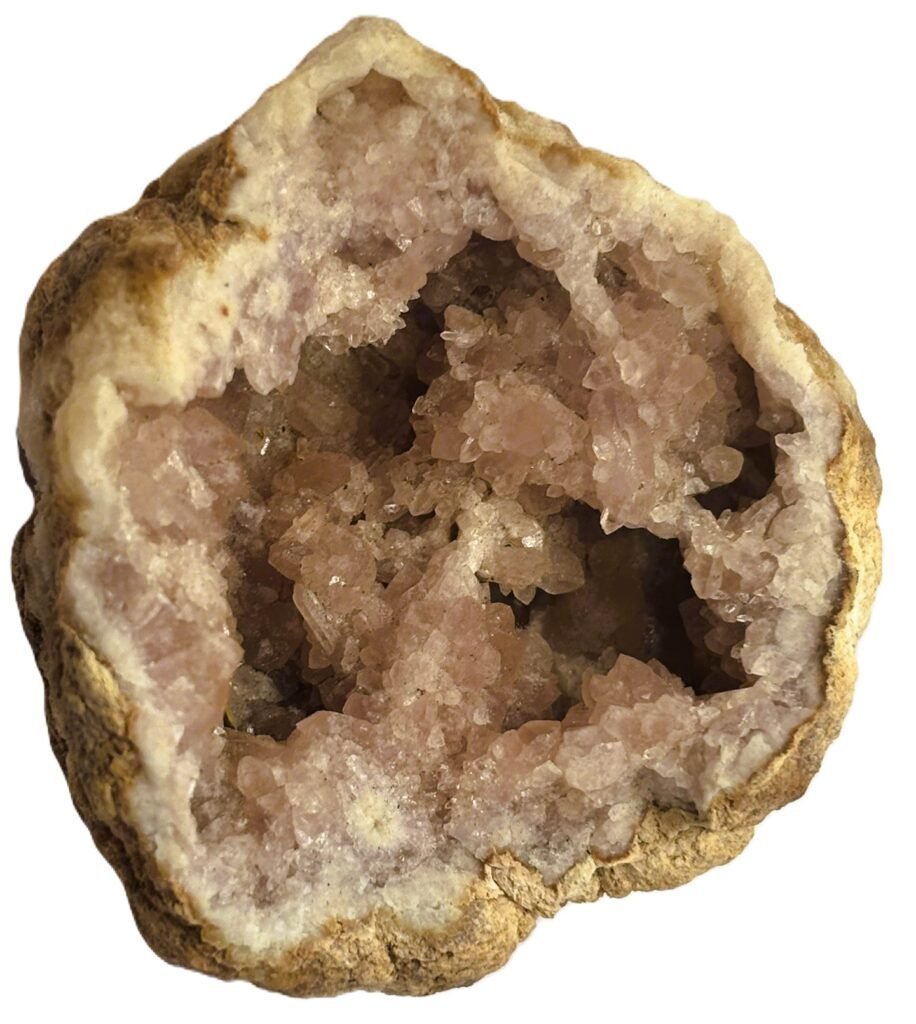
Pink Amethyst derives its name from its delicate rose-coloured hues and its similarity to traditional purple amethyst. The term distinguishes this unique variation from standard amethyst while maintaining its connection to the quartz family. Though a relatively recent discovery, it has quickly gained popularity for both its beauty and metaphysical properties.
Composition and Formation
Pink Amethyst is a variety of quartz, primarily composed of silicon dioxide (SiO2). Its distinctive pink coloration is believed to result from trace amounts of hematite and iron inclusions within the crystal structure. Unlike purple amethyst, which owes its colour to irradiation and iron impurities, Is soft blush tones are attributed to natural mineral inclusions that formed under specific geological conditions.
Locations
Pink Amethyst is primarily found in Argentina, specifically in the El Chiquada mine in Patagonia. This region is known for producing high-quality specimens with remarkable clarity and vibrant shades of pink. While purple amethyst deposits exist worldwide, Pink Amethyst remains an exceptionally rare variety with limited sources.
Physical Characteristics
Pink Amethyst typically forms in geodes or crystal clusters, displaying delicate pastel hues ranging from pale pink to dusty rose. It has a vitreous lustre and a Mohs hardness of 7, making it relatively durable for jewellery and ornamental use. The crystal structure may appear transparent to translucent, often exhibiting intricate patterns and natural formations similar to traditional amethyst and other quartz varieties.
Archaeological Finds and Historical Usage
As a newly recognised mineral variety, Pink Amethyst does not have the extensive historical records of its purple counterpart. However, ancient civilisations highly valued quartz crystals, including amethyst, for their protective and healing properties. Given its quartz composition, Pink Amethyst is likely to have been used in similar ways by those who discovered it, though specific archaeological evidence remains limited.
Current Usage
Today, Pink Amethyst is widely sought after for both its aesthetic and spiritual appeal. It is commonly used in jewellery, decorative carvings, meditation tools, and crystal healing practices. Many collectors and energy workers appreciate its gentle, calming presence, which is often associated with emotional balance and inner peace.
Interesting Facts
- It is distinct from Rose Quartz, despite their similar hues. While Rose Quartz forms in massive structures without a crystalline shape, Pink Amethyst develops in clusters and geodes, much like traditional amethyst.
- Due to its rarity, high-quality specimens of Pink Amethyst are considered valuable among collectors.
- Unlike purple amethyst, which can deepen in colour with exposure to radiation, Pink Amethyst maintains its natural soft hues due to its unique mineral composition.
Folklore, Legends, and Tales
Although Pink Amethyst lacks the extensive mythology of traditional amethyst, it has quickly developed a reputation for being a stone of emotional healing and tranquility. Some believe it carries the loving energy of Rose Quartz combined with the clarity and spiritual insight of Amethyst. In metaphysical traditions, it is often seen as a guardian stone, offering protection from negative energy while promoting self-love and acceptance.
Astrology and Chakra System Links
k Amethyst is often associated with the zodiac signs of Pisces, Libra, and Virgo, as these signs are believed to benefit from its calming and heart-centred energies.
In the chakra system, it is closely linked to the heart chakra, encouraging love, compassion, and emotional balance. Some also associate it with the third eye chakra, believing it enhances intuition and spiritual awareness. Many energy healers consider Pink Amethyst a high-vibrational stone, ideal for meditation and deep inner healing.
